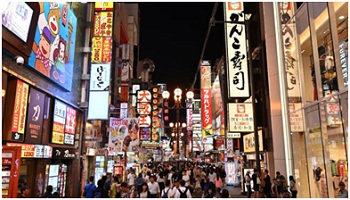The Economist Intelligence Unit’s 2019 Safe Cities Index (SCI) has ranked 60 destinations across the world in terms of their digital security, health security, infrastructure and personal safety. Topping the list is Tokyo. The most populated metropolis on Earth earns a score of 92.0 out of a possible 100.
Singapore is hot on its heels in second place with 91.5 and another Japanese metropolis, Osaka, is third, with 90.9. No big shocks there; these cities also made up the top three in the two previous SCI rankings, conducted in 2015 and 2017. European cities including Amsterdam — busy fighting over tourism issues — and Copenhagen, known for its picturesque waterside houses and laid back “hygge” lifestyle, also made the top 10, at number four and number eight respectively.
The only US city to hit the top 10 was the capital, Washington DC, (number 7), although Chicago just missed out, coming in at number 11. Our understanding of city safety has changed in recent years, the SCI report suggests. With issues such as terrorism and climate change increasingly on people’s minds, the index’s compilers say it now takes into account the ability of a city to “bounce back” after a natural or man-made disaster.
While analyzing a city’s resilience, the Safe Cities Index looked at the emergency services available in the city, transport facilities, catastrophe insurance, disaster-risk development and cyber-security preparedness. Tokyo also topped the list in terms of its digital security, but Singapore was rated higher for infrastructure security and personal security.
“The research highlights how different types of safety are thoroughly intertwined,” said Naka Kondo, Senior Editor of The Economist Intelligence Unit and Editor of the SCI 2019 report. Hong Kong, number 9 on the list in 2017, was down to number 20 this year. The city has been rocked by sometimes violent anti-government protests in the past few months, leading to a decline in visitor numbers. Cities don’t have to be rich to be safe, the report says, although it acknowledges that cities in developing countries tend to appear lower








